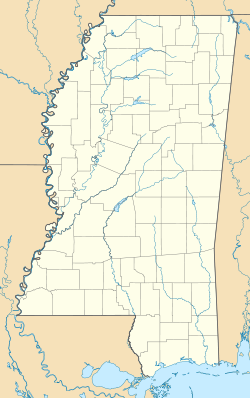Miller Plantation House | |
| Nearest city | Olive Branch, Mississippi |
|---|---|
| Coordinates | 34°55′28″N89°46′45″W / 34.92444°N 89.77917°W |
| Area | 1 acre (0.40 ha) |
| Built | 1849 |
| Architectural style | Greek Revival |
| NRHP reference No. | 82004630 [1] |
| Added to NRHP | July 15, 1982 |
The Miller Plantation House is a historic mansion in Olive Branch, Mississippi. It was built in 1849 for William Lord Miller, a planter. [2] It was designed in the Greek Revival architectural style, and its large size was unusual for its remote location. [2] It has been listed on the National Register of Historic Places since July 15, 1982. [1]
